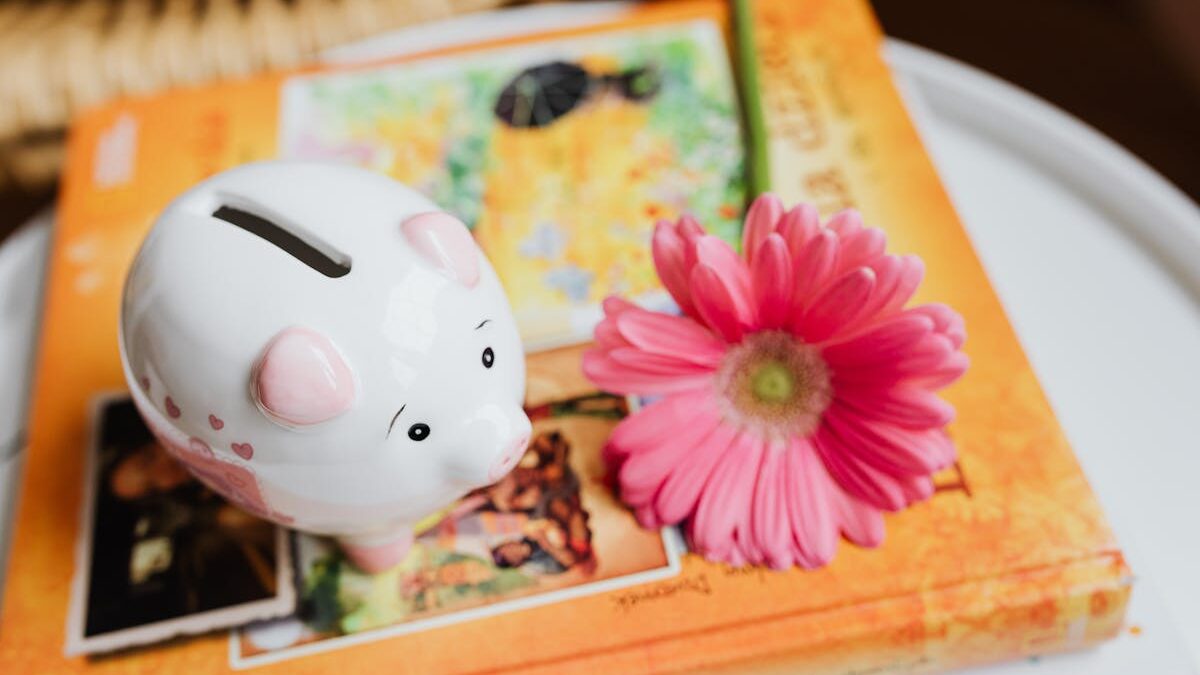One of the best ways to introduce kids to the concept of saving is through a piggy bank or money bank. It’s effective and engaging because it’s fun.
Teaching children the value of saving money is a crucial lesson that can set the stage for lifelong financial responsibility. Not only does a piggy bank serve as an exciting interactive tool, it also helps instil the importance of planning ahead, money management and thinking deeply about purchases.
Here, we’ll explore creative and practical ways that a piggy bank can be used to teach your kids financial literacy.
A quick word on choosing the right piggy bank
The extensive range of piggy banks can actually work against your plan to save. Do you really need to spend money purchasing a fancy piggy bank, just to put money in?
A “piggy bank” can be as simple as a strong jar with a lid or a large tin. Even a small cardboard box will do the trick for a money box. You may even be able to pick up an adorable piggy bank for free at your local bank on promotional days.
Kids can also make their own piggy bank with arts and crafts materials at home, to suit their personality and style. Make sure to include traditional piggy bank elements, such as a coin slot and a secure and removable stopper to enable the money to be taken out.
If you are buying a piggy bank, bear in mind those made of ceramic or glass can be fragile, making them less suitable for younger children. More modern piggy banks are made of unbreakable material and have removable nose cones for easy coin retrieval.
Whichever way you decide to go, the point is to help you kids learn ways to save money.
14 money-saving ideas for kids
Once you or your children have chosen the perfect piggy bank, help them get the coins flowing in by teaching them these 14 important saving tips.
1. Budget
Start by explaining what money is, how it is earned and what it is used for. Use real coins and notes to make it tangible. Help them understand the difference between needs (essential items like food and clothes) and wants (non-essential items like toys and lollies).
Explain the concepts of income (money coming in) and expenses (money going out). You can use their allowance as an example. Divide expenses into categories like savings, spending and sharing (charity). Use jars or envelopes to visually separate the money.
Encourage them to write down what they spend money on, using a notebook. At the end of each week or month, review their spending together. Discuss what went well and where they can improve.
2. Saving goals
A money-saving goal is a specific amount of money that you set for yourself to save by a certain date. For your child, it might be that they want to have $100 saved by Christmas. Help them calculate how many weeks they have until their specific date and how much money they will need to save each week to complete their goal. You can help them set short-term goals for smaller purchases, all the way up to long-term goals such as saving to buy a car.
3. Spare change
Encourage them to create a habit of dropping any of their spare change into their piggy bank. Small amounts can add up over time. Each time they spend some of their cash, the rule is the spare change can’t be used on lollies or other spending, but goes in the piggy bank.
4. The 10 per cent
Help them create the habit of consistently saving 10 per cent of whatever money they receive, whether through their pocket money or gifts. It might feel like a lot to start with, but in the long run, it will turn into a large savings pool and they will be happy they did it.
5. The “almost purchases”
For every purchase your child really wanted but decided against, the cost of the “almost purchase” should be saved. For example, if they took $5 to the shops but decided not to buy the product, instead of impulse buying something else, the money should be saved.
6. Wait before buying
If your child really wants something, encourage them to wait three days. This gives them time to discover if they still feel the same about the item. If the ticket price is large, such as boutique toys or an exclusive brand, encourage them to wait a week. This can help prevent a lot of unnecessary spending.
7. Birthday money
For all birthday or holiday money, encourage them to save half of it. This will help them avoid reckless spending. Instead, they will be able to spend their birthday money on something they really will enjoy later on.
8. Earn more money
Help your child think up more ways to make money. Encourage them to look outside the family. It could be collecting plastic and glass bottles to exchange for recycling money or mowing lawns. Any little job can help boost their savings jar.
9. Selling unused items
If your child has a lot of things they don’t use anymore, help them to declutter and downsize. Encourage them to sell the things they don’t want to keep. Often, kids buy lifestyle toys and then regret it later as they realise they haven’t used them at all. These can be sold and the money saved for future goals.
10. Savings challenge
Make money-saving fun by setting up challenges. They could be weekly or monthly savings challenges. The whole family should be involved, including the adults. Set the challenge at a relevant amount for all participants and at the end of the challenge, do a little something special together. This will help teach your child patience and also bring your family together on the important topic of money.
11. No-spend days
Along with the savings challenge, you can set a challenge that particular days are no-spend days. This helps to avoid impulse buying, but also helps everyone to plan ahead, as they will need to pack lunch and snacks, instead of buying out.
12. Round up purchases
Each time your child buys something, encourage them to round up the original price to the whole dollar amount. If the toy is $4.50, they save the remaining 50 cents in their jar. That, along with any spare change, will help to further increase their savings.
13. Save the refunds
Refunds always feel good because you have the money back in your hand. However, this can also be a tempting time for impulse buying. Help your child create a habit of saving their refunds.
14. Takeaway food
Takeaway food, drinks and snacks can be the biggest money drain. Help your child plan ahead by taking food from home instead of spending their pocket money on takeaway food.
Incorporating the piggy bank into daily life
Make saving a part of your child’s daily routine. It needs to be a routine for it to be effective. You can ask them to be involved in small ways in the household budgeting too. Get them thinking up ways you as a family can save and things you could all save for, like a family holiday.
For younger kids, you can set up “shop” at home, welcoming “customers” and play buying, filling up a “shopping cart” and paying for items. You can also create simple maths games that involve counting coins or sorting them by denomination, which not only teaches saving but also enhances their numeracy skills.
Piggy banks are not just a fun accessory. They can play a significant role in financial education. By encouraging your child to regularly add to the coin bank and track their savings, you’re helping them understand key financial concepts. This includes the value of money, the importance of saving and the basics of budgeting.
Read next:
- 4 fun games when kids are learning about money
- 5 mistakes parents make when teaching children about money
- Teaching kids about money: 8 savvy ways

How helpful was this article?
Click on a star to rate it!
0 / 5. 0
Be the first to rate this post!
Adriana Wales
Related posts
Subscribe
Receive personalised articles from experts and wellness inspiration weekly!

